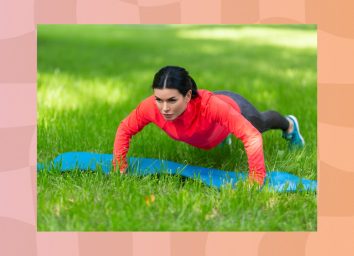If You Can Balance on One Foot This Many Seconds, You're in Great Shape
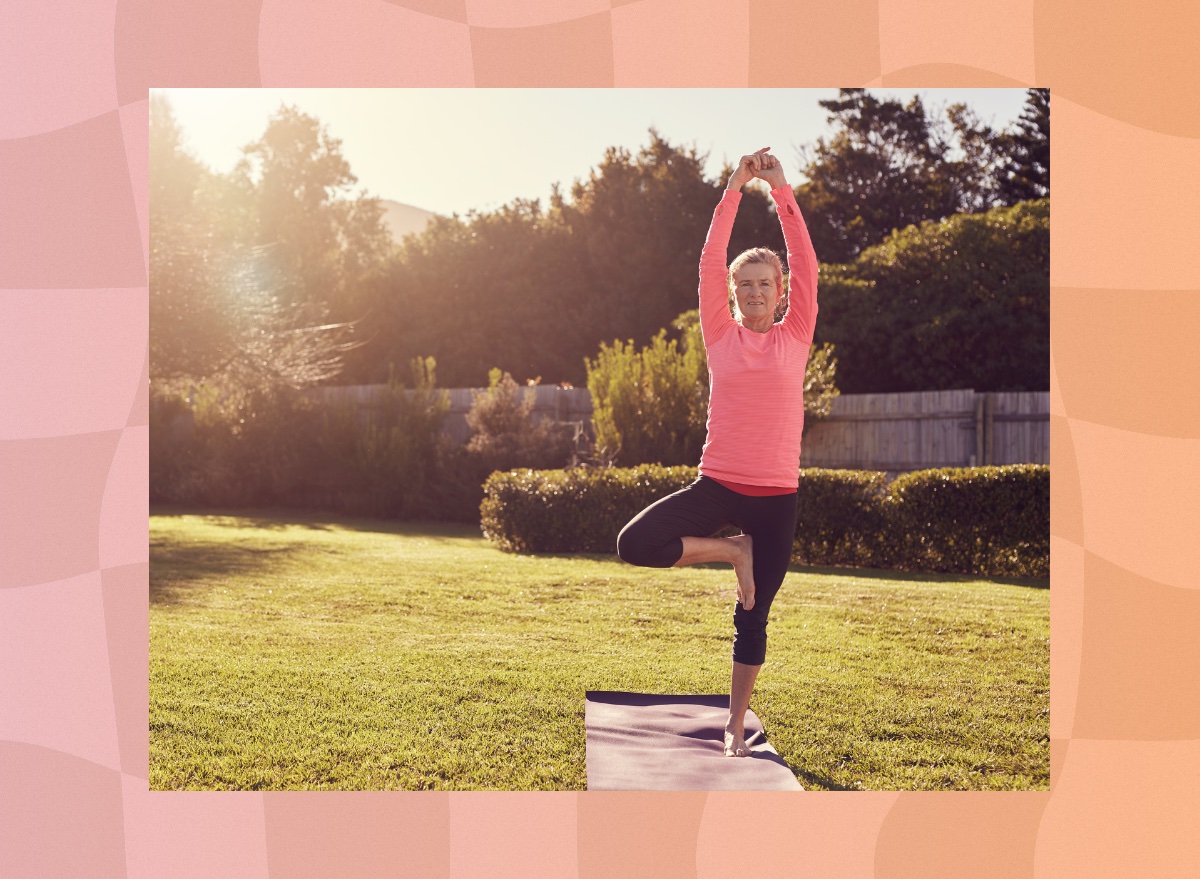
Balancing on one foot might seem like child's play, but don't underestimate its value as a fitness (and longevity) benchmark. Trust me, it's more than just a party trick—balancing tests your coordination, stability, and muscular strength. From athletes to everyday movers, the ability to hold your balance on one foot speaks volumes about your overall fitness and physical resilience.
You might be asking, why does balancing on one-foot matter? The answer lies in injury prevention, proper posture, and improving athletic and everyday performance. So, how long can you hold your ground? Let's find out what your balance time says about your fitness level.
Why Balance Is a Key Indicator of Fitness
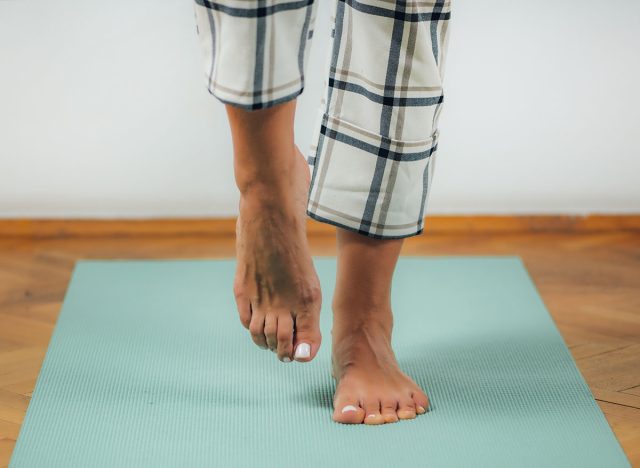
Balance is the overlooked hero of fitness. It integrates strength, flexibility, and neuromuscular control to keep you steady on your feet. When you balance on one leg, your stabilizer muscles, like those in your core, hips, and ankles, work overtime to keep you from tipping over.
This isn't just important for athletes. Whether walking up stairs, catching yourself from a slip, or simply standing in line, balance keeps your body functioning safely and efficiently. It's also a critical skill as we age, helping to prevent falls and maintain independence. Testing your balance is a quick and effective way to assess your overall physical stability and control.
RELATED: 7 Simple Daily Exercises To Shrink Hanging Belly Fat
How Long Should You Be Able to Balance on One Foot?
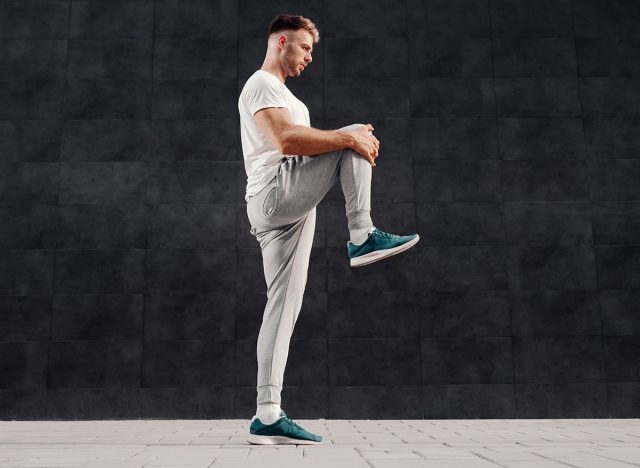
How long you can balance on one foot depends on your age and fitness level. Here's a breakdown to help you gauge where you stand:
- Beginner: You're off to a solid start if you can balance for 15–20 seconds. This level shows decent stability and control, but there's room for improvement.
- Intermediate: Holding your balance for 30–40 seconds demonstrates strong core and lower-body stability. You've likely built a solid foundation of strength and coordination.
- Advanced: You're in fantastic shape if you can balance on one foot for 60+ seconds without wobbling. This level showcases excellent neuromuscular control, strength, and endurance.
How to Improve Your Balance
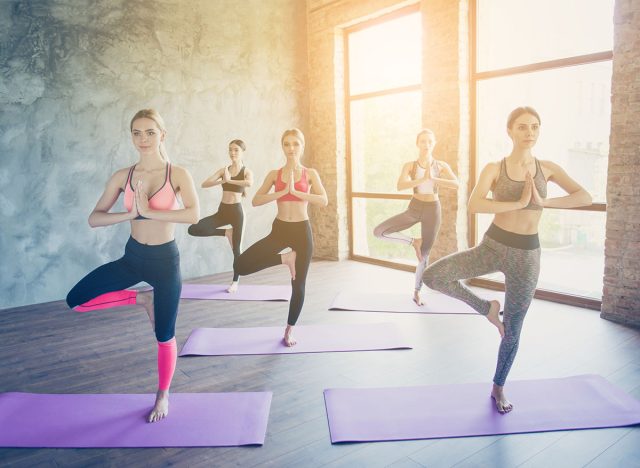
Want to level up your balance game? Here are some practical ways to boost your one-foot hold:
- Test & Re-Test:
Track your balance time weekly to monitor your progress. Regular testing helps you identify improvements and keeps you motivated. - Strengthen Your Core:
A strong core is crucial for balance. Incorporate exercises like planks, dead bugs, and bird dogs to build a rock-solid midsection. - Activate Your Stabilizers:
Focus on strengthening your hips, glutes, and ankles with single-leg exercises like step-ups, single-leg deadlifts, and Bulgarian split squats. - Practice Balance Drills:
Train your balance with targeted exercises such as standing on a balance pad, wobble board, or simply closing your eyes while balancing on one foot. Practice makes perfect! - Utilize Dynamic Movements:
Incorporate dynamic exercises like skater jumps, lateral lunges, and single-leg hops to improve coordination and stability under movement. - Progress Over Time:
Start with easier variations, like holding onto a wall or chair, and gradually increase the difficulty by letting go or balancing on uneven surfaces. And if you enjoyed this article, don't miss How Long Your Walking Workout Should Be To Shrink Belly Fat.


